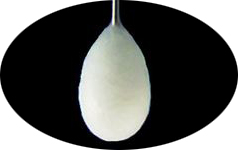Cryosurgery
Contact
PROSTATE
- Prostate cancer
- Prostate cryoreduction
KIDNEY
- Kidney cancer through CT and guided ultrasound
- Laparoscopic surgery for kidney cancer
THORAX
- Lung cancer
-Mediastinal cancer
BREAST
- Breast cancer
- Fibroadenoma
BONES
- Benign tumours
- Bone cancer
PANCREAS
LYMPH GLANDS
LIVER

Cryosurgery basically involves freezing cancer cells until they are destroyed in a natural way, for both benign and malignant tumorous cells. To achieve this, a noble gas such as Argon is used, and applied through very fine needle-shaped tubes which are inserted into the tumour using CT or ultrasound guidance.
As the gas spreads within the probes it reduces the temperature of the affected area, to reach -192 degrees centigrade. This cryogenic temperature burns the affected tissue to destroy the cancer cells.
This technique can be used to destroy the tumour in a natural way, in a "clean" surgical procedure which is minimally invasive for the human body and presents few side effects. If necessary, this technique can be used in connection with traditional techniques such as chemotherapy and radiotherapy, and can be useful in cases where traditional surgery is not recommended or possible.
Cryosurgery can also be used as a complementary therapy to others for treating any type of illness. Treatment of a tumour through cryotherapy involves a multi-therapy approach: radiotherapy, chemotherapy and heat therapy can all be connected to cryotherapy, which also boasts a powerful advantage as treatment can be repeated during the course of the illness.
Advances in this technique have enabled treatment of other organs in the body affected by cancer in addition to the prostate and kidney, the so-called solid organs: lung, bones, connective tissue, breast, pancreas, liver. After successfully performing the first cryosurgery operation in Europe in 2010 to treat lung cancer in a 72 year-old patient at the Santa Elena Clinic in Torremolinos (Spain), work has continued on clinical applications and scientific advances.
-CRYOSURGERY: BASIC GUIDELINES
1. Minimally invasive treatment.
2. Minimal or non-existent secondary effects.
3. Natural treatment where deep freezing temperatures (-192°C) are applied.
4. Noble gases like Argon, Helium and liquid Nitrogen are used to freeze and destroy the tumour. Gas flows only through the cryoprobe applicator, but never enters in physical contact with the patient.
5. It only affects the areas and cells that we have previously selected and controlled during the whole procedure through CT or ultrasound scan.
6. It can be combined with other treatments like radiotherapy and chemotherapy, if needed by the patient or prescribed by the oncologist.
7. It is reproducible when needed, whereas surgery and radiotherapy cannot be reproduced.
-CRYOSURGERY ADVANTAGES AND COMPARISON
The advantages of cryosurgery and cryotherapy are significant:
- Minimally invasive technique
- 24 HOUR hospital stay
- No transfusions or absorption of liquids
- Risk of incontinence nonexistent
- High quality of life index
- Minimally invasive technique


